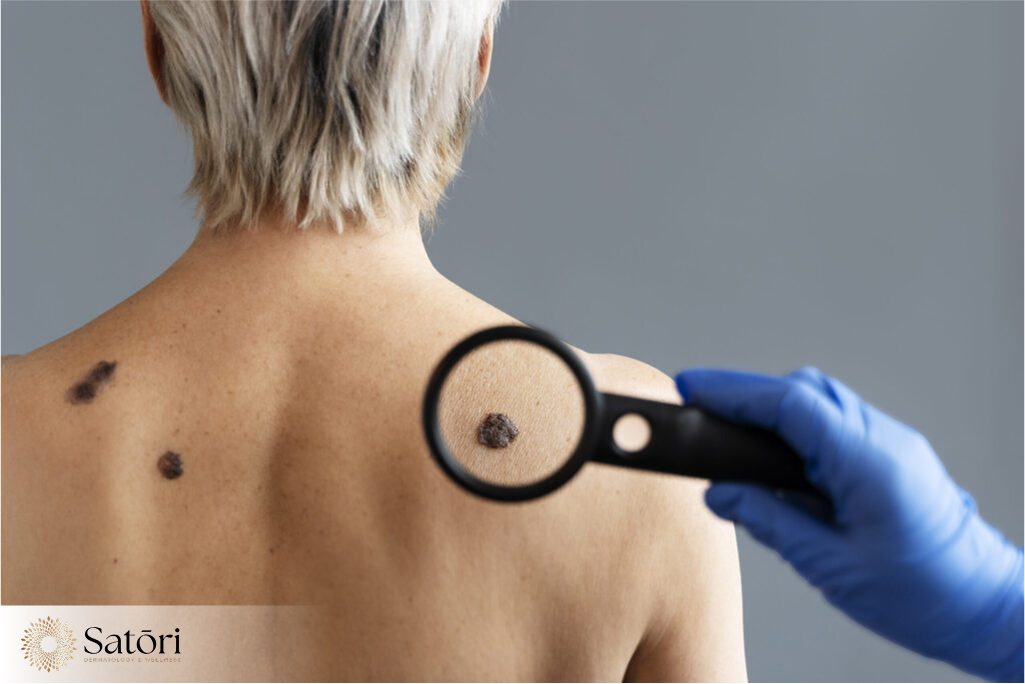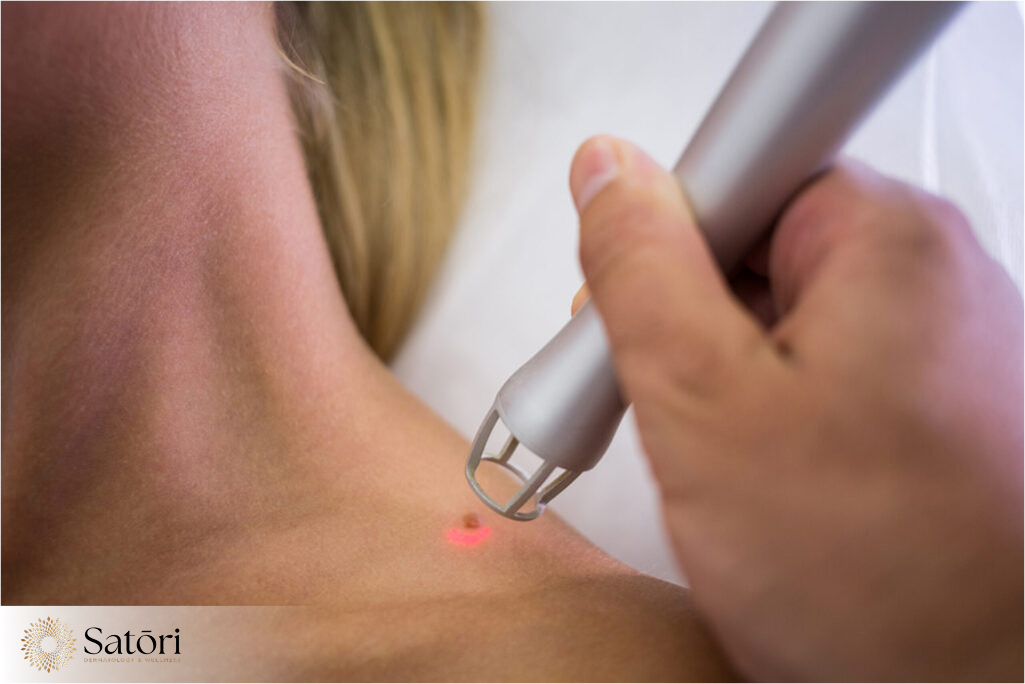Warts might be small, but they can cause big concerns for many people. These common skin conditions appear as small growths on the skin and can be both unsightly and uncomfortable. If you’ve tried over-the-counter remedies without success, you might be wondering: how do dermatologists remove warts? The good news is that medical professionals have several effective methods to treat warts and help restore clear, healthy skin.

Warts Are More Than Just Skin Deep
Warts are skin growths caused by the human papillomavirus (HPV). When this virus infects the top layer of skin, it causes rapid growth of cells on the outer layer of the skin, forming the characteristic bump we recognize as a wart. The virus thrives in warm, moist environments and spreads through direct contact with infected skin or surfaces.
There are several types of warts you might encounter.
- Common warts: Rough, grainy growths that typically appear on the fingers, hands, and knees.
- Plantar warts: Found on the soles of the feet and can be painful due to pressure from walking or standing.
- Flat warts: Small, smooth, and often occur in clusters on the face or legs.
- Filiform warts: Thin, finger-like projections that usually develop around the mouth or nose.
Many warts will eventually go away without treatment as your immune system fights off the virus, but this process can take months or even years. For those who don’t want to wait or have warts in visible or uncomfortable locations, seeking treatment from a dermatologist is often the best solution.

When to See a Dermatologist for Wart Removal
While some warts may resolve on their own, others require professional intervention. You should consider seeing a dermatologist if your warts are painful, multiplying, located in sensitive areas like the genital area, or if they persist despite home treatments.
A healthcare professional can provide specialized care tailored to your specific situation. During your initial consultation, your dermatologist will examine the warts, discuss your medical history, and recommend the most appropriate treatment plan for your skin type and wart location.

Professional Methods to Remove Warts
Dermatologists have multiple effective methods to treat warts. The approach they recommend will depend on the type of wart, its location, your overall health, and your skin type. Here are the most common professional techniques used to get rid of these stubborn skin growths:
Cryotherapy: Freezing Away the Problem
Cryotherapy is perhaps the most common method dermatologists use to remove warts. This quick procedure involves applying liquid nitrogen to freeze the wart. The extreme cold damages the wart tissue and cuts off its blood supply, causing a blister to form under and around the wart. As the area heals, the dead wart and surrounding dead skin cells eventually fall off.
The freezing sensation can be briefly painful, especially for patients with sensitive skin. For most warts, particularly common warts and plantar warts, freezing provides excellent results. However, complete clearing often requires repeat treatments every 2-3 weeks.
Prescription-Strength Peeling Medicine
While you may have tried over-the-counter salicylic acid products, dermatologists can prescribe stronger formulations. These topical medications work by gradually removing layers of the wart-infected skin cells. Your doctor might apply this potent solution in-office or prescribe it for home use between visits.
This treatment involves applying the peeling medicine to destroy the outer layer of the wart. The process may take several weeks, with dead skin being removed between applications to improve penetration and effectiveness.
Laser Treatment for Precision Wart Removal
For stubborn warts that don’t respond to other treatments, laser treatment offers a targeted approach. This technique involves using focused light energy to destroy the tiny blood vessels that nourish the wart. Without its blood supply, the wart tissue dies and eventually falls off.
Laser treatment can be particularly effective for filiform warts and warts that have resisted other methods. While this approach may cause some discomfort, many patients appreciate the precision and effectiveness, especially for hard-to-treat cases.
Electrosurgery and Curettage
Some warts respond best to more direct removal methods. Electrosurgery uses an electric needle to burn off the wart tissue, followed by curettage (scraping away the dead wart with a sharp instrument). This combined approach is particularly effective for common warts and filiform warts.
This method requires local anesthesia but provides immediate removal. However, it may leave a small scar depending on the size and depth of the wart being treated.
Immunotherapy
For particularly resistant or widespread warts, dermatologists might recommend immunotherapy. This innovative approach doesn’t directly target the wart but instead stimulates your immune system to fight the HPV virus causing your warts.
Treatment may involve applying certain chemicals to the wart to trigger an allergic reaction, injecting antigens into the wart, or using prescription medications that enhance immune function. When successful, immunotherapy can clear not just the treated wart but others as well, as your body develops resistance to the specific strain of HPV.
What to Expect During and After Treatment
Most wart removal procedures are outpatient treatments performed in your dermatologist’s office. The specific experience varies based on the method used, but most are quick procedures with minimal discomfort.
Following treatments, you can expect some tenderness in the treated area. Your doctor will provide specific aftercare instructions, which may include keeping the area clean and dry, applying antibiotic ointment, or returning for follow-up visits to check healing progress.
Some warts require multiple treatments before they’re completely gone. Particularly stubborn warts might need a combination of different approaches. Your dermatologist will monitor your progress and adjust the treatment plan as needed to ensure the best outcome for your specific situation.

How to Keep Warts Away
Once you’ve successfully treated your warts, you’ll want to prevent them from returning. Since warts are caused by a virus that can remain dormant in your skin, recurrence is possible.
Here are some strategies to reduce your risk:
Boosting your immune system through healthy lifestyle choices can help your body fight off the HPV naturally. Regular handwashing and avoiding direct contact with others’ warts can prevent reinfection or spreading to other areas of your body.
For those eligible, the HPV vaccine can prevent infection with certain strains of the virus that cause warts, though it doesn’t protect against all types. Your healthcare professional can provide guidance on whether this preventive measure is appropriate for you.
Keeping skin clean and dry, avoiding walking barefoot in public areas like pools and locker rooms, and not sharing personal items like towels or razors can all help prevent warts from forming or returning.
Finding the Right Treatment for You
While most warts are harmless, they can be bothersome and sometimes painful. Understanding how dermatologists remove warts can help you make informed decisions about your treatment options. The most effective approach depends on the type and location of your warts, your skin type, and your overall health.
If you’re dealing with warts that won’t go away, are spreading, or causing discomfort, it’s time to consult a dermatologist. With professional care, even the most stubborn warts can be effectively treated, restoring your skin’s health and your confidence.
Remember that early treatment often leads to better outcomes and may prevent the spread of warts to other parts of your body or to other people. Your dermatologist is your partner in skin health and can guide you through the process of wart removal with expertise and care.

